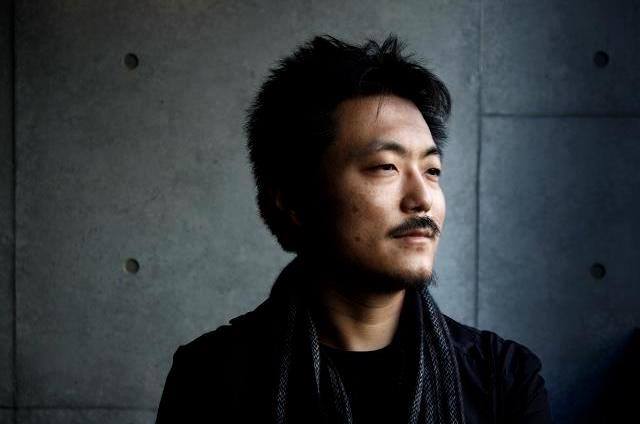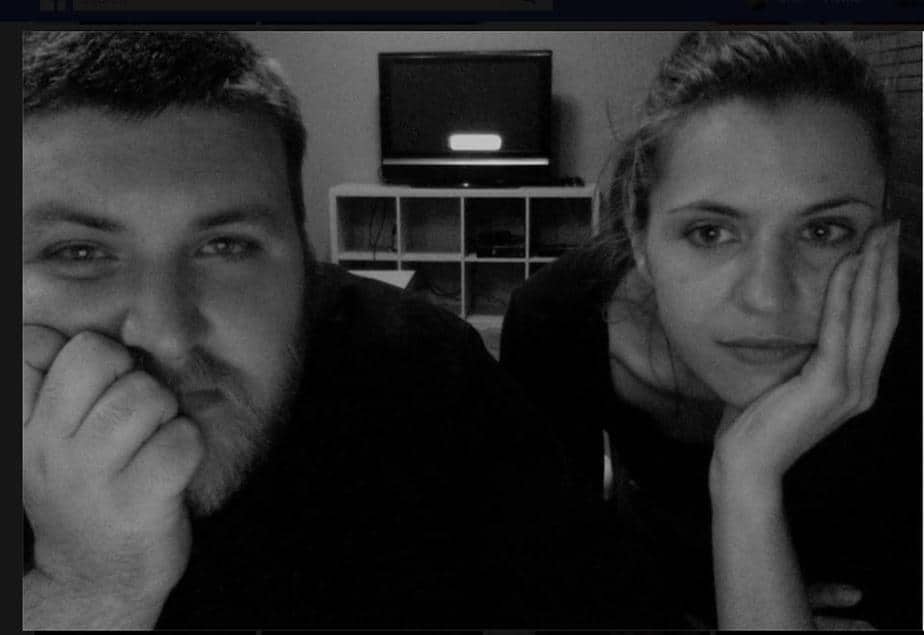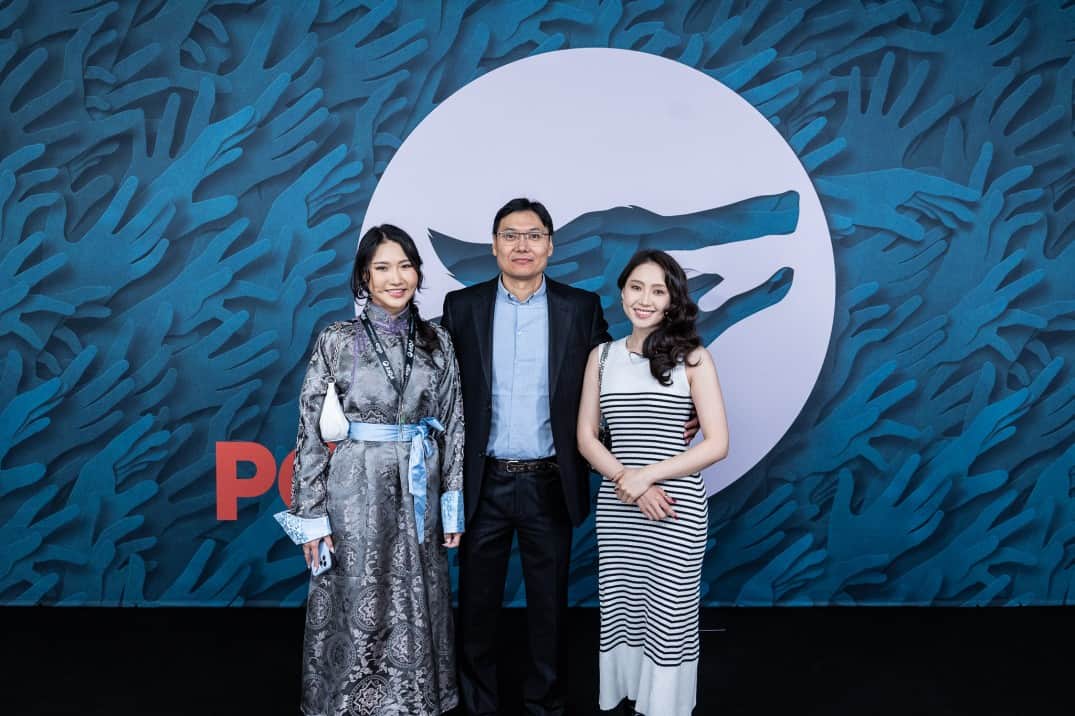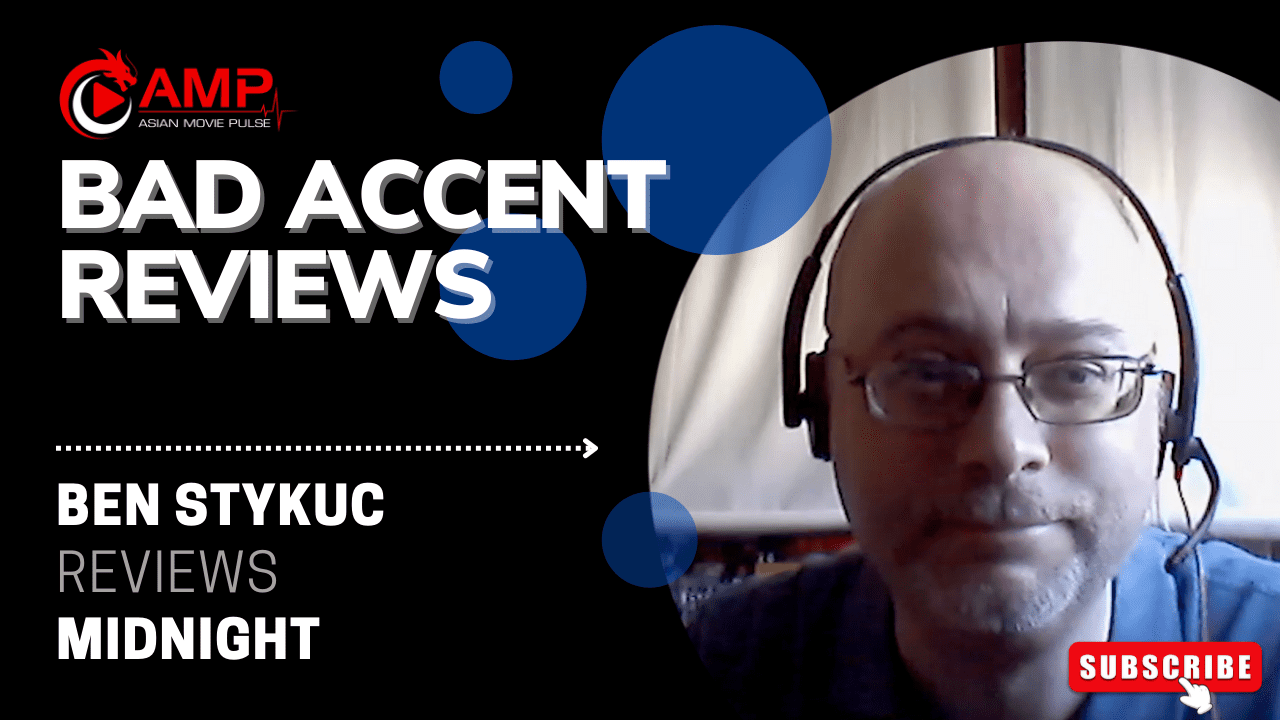A graduate of the University of Tokyo's cinema studies course, Atsushi Funahashi studied directing at the School of Visual Arts in New York and shot his first two films, “Echoes” (2001) and “Big River” (2006), in the United States. The March 11, 2011 triple disaster turned his thoughts decisively toward home. His next films, Nuclear Nation 1 and 2 dealt with the particular issue, while in 2016, he shot the first-ever co-production among Japan, Portugal and USA, “Lovers on Borders”, which has recently been re-cut for an international version released by Raintrail Pictures. His latest film, “Company Retreat” recently had its world premiere in Tokyo International Film Festival.
On both the aforementioned occasions, we speak with him about the new cut of Lovers on Borders, shooting a film in Portugal, Japanese society and particularly the issue of harassment, his unique way of shooting “Company Retreat”, the role of cinema, and many other topics.
Recently, you re-edited “Lovers on Borders” for an international cut. Can you give us some more details?
When we were shooting “Lovers on Borders” we talked about this sense of a double déjà vu between 18th century Portugal and 21st century Japan. Initially, we thought that it would be interesting to start off the film in Portugal, because that was the chronological order. We first visited Portugal and then moved on to Japan. In the initial cut, the film started with one hour that took place in Portugal, then a bit more than an hour and a half taking place in Japan, and a bit in modern day Portugal. After shooting the film though, we thought that it would be more interesting to integrate those two timelines. That was not our initial thinking; we actually started thinking differently after a year. Then I start editing, thinking that we could turn the film into a modern day story, and compare the two natural disasters. I thought it would be more interesting, and essentially more provoking if those timelines intertwined each other, so that the viewers will experience more intensely this deja vu we envisioned from the beginning. That is how the latest cut came about.
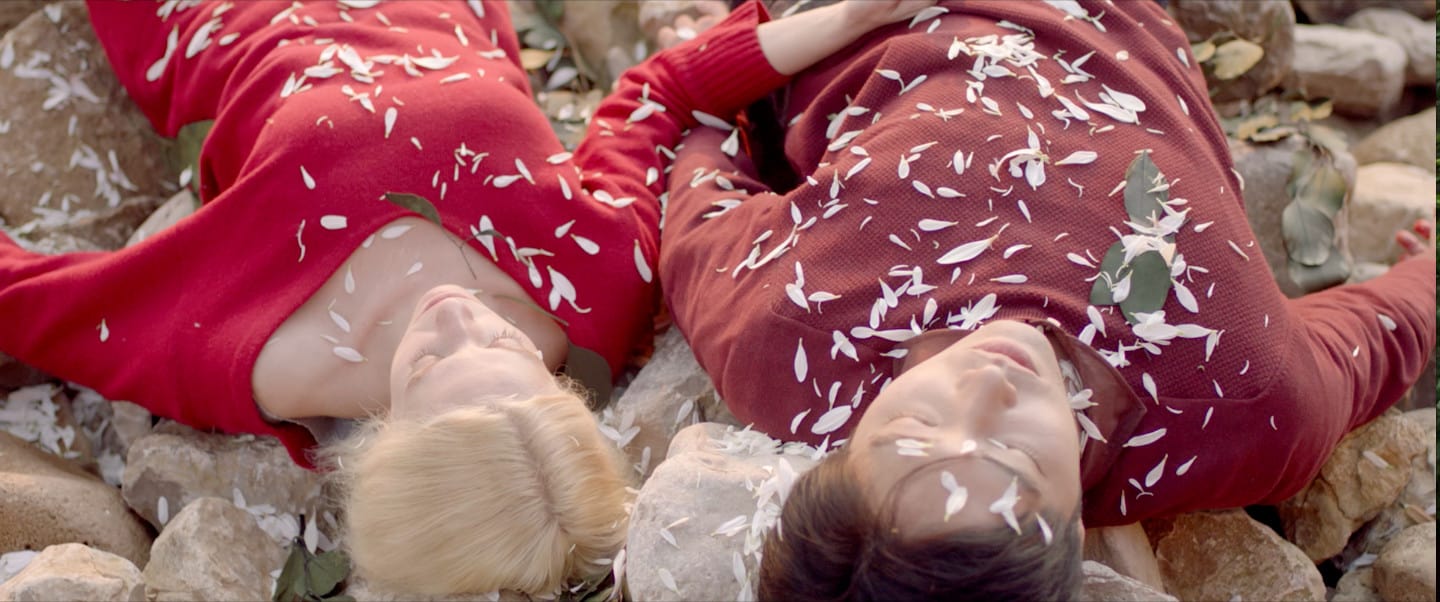
How did you end up shooting a film in Portugal?
Just after the March 11 disaster, almost all filmmakers were just focusing on this internal impact. I shot this documentary series at the time, “Nuclear Nation” 1 and 2, and I travelled all over the world. I went to Berlinale, showed the films in France, the US, and all over the world and this allowed me to see the issue from a more global point of view. I thought it was more interesting to have a more external and a historic point of view to this natural disaster. That is when the producer, Rodrigo Areias, approached me through his production company. Actually, he had seen the film I shot in 2013; “Cold Bloom” a melodrama about an impossible love story, and it reminded him of Mikio Naruse's films, that is why he proposed to me to shoot a movie in Portugal. He was the one that brought to my attention the Lisbon Earthquake of 1755, which is considered the biggest to ever take place in Europe, and that is how we started thinking about “crossing” the two disasters, the Japanese and the Portuguese one.
Then, I started researching, and during that research, I found out that, at the time, there was a huge market in Japan for local slaves. During the 17th and 18th century, Japan actually exported many slaves, something that you cannot find in Japanese history books, in exchange for gunpowder brought by the Portuguese. Essentially, Portugal brought Christianity and guns to Japan; the Japanese used guns to kill each other and then found Christianity (laughter). Japan at the time had no currency, yen was not instituted yet so they gave slaves in exchange for gunpowder. That is why I thought it would be an interesting idea to shoot a movie about Japanese slaves in Portugal at the time, who, like the current Japanese, are also hit by a tsunami. As I mentioned before, this is not something referred to history books, because history is written by the winners, not the losers, but I am more interested in losers actually.
Would you say Japan is an intensely male dominated country, as it is shown in the film?
Japan holds the 121st place in the gender-equality ranking, the lowest among developed countries. Countries like Sierra Leone or others where is still even female genitalia mutilation, are actually above Japan. So yes, Japan is a distinctly male dominated country. I was living in New York for 10 years and that was the first thing I realized when I returned: that women are so suppressed in this country. It is the whole system actually, you cannot say it is just sexual harassment; the social structure is really rigged, something that is very wrong. That is why it is very difficult to raise a voice in favor of change. In the film, Saki, the protagonist, even when she raised her voice, there was no system to support her, just a female colleague, Kinoshita. Everyone else was telling her to shut up and put up with it, bear it, if she wanted to get promoted in the company. This is something that happens very frequently within the Japanese society and that is why I thought it would be very interesting to shoot a docu-drama based on this topic, to raise awareness.

During the scene where we actually see the incident between Saki and her boss, after she complains about the attitude of a supplier, he urges her to just smile and nod in these situations. I feel this is an attitude that most Japanese employees have adopted, when dealing with any kind of customer actually.
Yes, that is something more like a collective unconsciousness; that you have to smile and nod, you cannot show your feelings. You have to suppress your frustration, anger, or shame; you are not supposed to show it.
Why did you decide to have only this scene in color?
It is a very important scene, and also, cinematically it stands out from every other scene, additionally because it takes place in the past, and so I thought that the color would fit. I wanted to make a color film too, but I thought that the theme, the place, and the light were better fit for black and white.
Apart from directing, you also took upon you the roles of the writer, DP, sound-recorder and editing. Why?
I really wanted to minimize the existence of the camera on the set, as if you are shooting with a smartphone. I really did not want to have a big crew on the set. I wanted to minimize my presence. The photos from the set actually look like the film, except for me sitting in a corner. For example, the final scene was a two-hour take of the actors talking consecutively. Then, I cut it together so it is more like a documentary filming. So, as you proceed with the movie, you have wide shots, close ups, middle shots and when you feel it is the right thing you move to a pan; you decide on the spot, it is not decided beforehand. It was more spontaneous, like capturing reactions. We had a basic flow/plot for the film but we did not script it, the actors understood that there were no written lines; they had to realize the intention. For example, when Kinoshita was supporting Saki, we agreed that she wants to protect her no matter what, but the actress did not know what to say beforehand. We set it up like that for each actor. We set up objectives for each character as if they compete/fight each other, because they have different objectives. Then we had them in front of the lens, and they started talking back and forth, arguing. As a director and a cameraman, I did not know what would happen, and I was hoping that this feeling would be evident to the people who are watching, who, like me, are discovering what will happen at the moment it is happening.
So, no rehearsals and just one take for each scene?
Actually, we did 2-3 takes, but we had no rehearsals, no.
How did the actors react to this approach?
They liked it actually, because they could say what they wanted to say. In the beginning, they were confused, but as it evolved into a method, they got used to it. We shot in four seasons, spring, summer, autumn and winter, and we shot each one in about 4 or 5 days. Little by little, the actors evolved into those characters.
I admire all these directors, like the Dardenne Brothers and Ken Loach, who shoot with a mix of professional and amateur actors. I tried to create moments where the actors discover their characters. It is not cinema verite, but is almost like a documentary. I got training, directing and acting in New York in the late 1990s to the early 2000, in Actors Studio, where they teach Method Acting. I feel there are pros and cons when you want to use it. Actors like Susan Sarandon or Robert DeNiro who studied there, are great method actors, but they did not use every part of method acting, they just picked whatever they thought was useful. This notion of objective, for example, is very useful. Furthermore, the system of filming in Japan is very different and I am importing this method into the Japanese way of shooting, which makes it unique.
So, there are no method actors in Japan?
There are, but they are not good (laughter)
Can you give us some more details about the casting process in the film?
I did not have much freedom for this project, because the socio-cultural theme, about harassment, which is deeply rooted in the society sounds heavy and in essence, is not easy to sell. So the producer were saying that it has to be a small movie; we cannot cast, for example, Tasuku Emoto, as we did for “Lovers on Borders”, we cannot raise that kind of budget. Therefore, we had to make it a small movie. Essentially, we cast the actors who agreed to this concept, with no auditions.
During the company retreat portrayed in the film, there is also Ozu, a man who records the whole thing, present. Why did you choose to have such a character in the story?
I thought it would be very interesting to have a peeping-Tom-like character, who is like a dark presence, just observing what is happening. Therefore, when the doxing happens, you think that it was Ozu who was doing it. He is just nosy and curious about everything, which is why he is recording. I like the unsettling feeling that he emits.
Another very interesting character in the film is Ushihara, a woman employee of the company who attacks the other two women verbally for their stance, mentioning that she has managed to get promotions because she was able to put up with the things Saki faced. Can you tell us a bit more about the role?
In the US, there is the term ‘honorary white', which nowadays refers to black people who act in favor of white people, because they feel that in order to survive, they have to follow the white people's ways. Therefore, subconsciously, they are acknowledging white supremacy. The same thing applies in Japan regarding the inequality between men and women, but there are lots of women who act like ‘honorary men', essentially admitting that men are more powerful within the society and so they feel they have to obey this system. And not only do they obey, but also push other women to do the same thing. That is exactly the role of Ushihara in the movie.
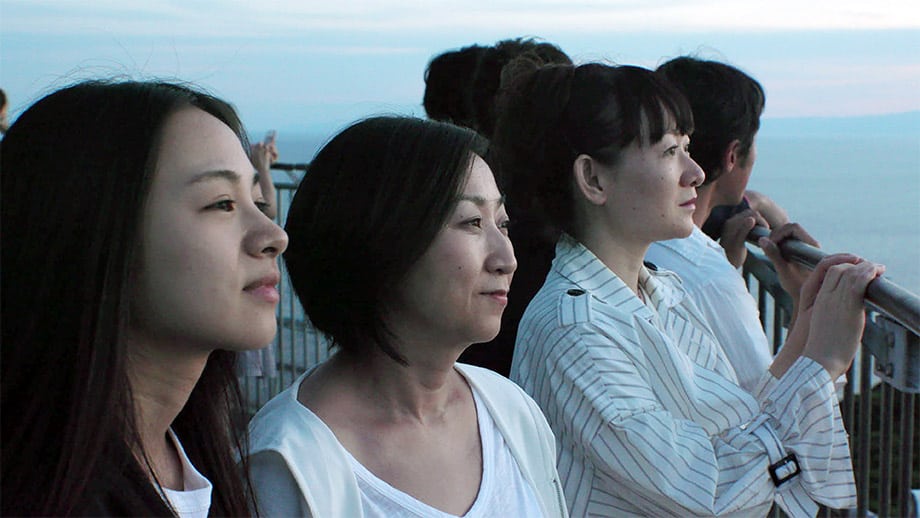
Are you optimistic that this will change eventually?
A lot of people are discussing this issue and are saying that it needs to be changed. However, as I depicted in the movie, harassment is multilayered and deeply rooted in society, so it is hard to change. In the movie industry, they try to face this issue and there are now anti-harassment classes before shooting and also before people start working in movie theaters. We are trying to accomplish that, at least in the film industry in Japan.
There was this case involving UPLINK film company, where the owner/manager harassed all these employees who were working in the companies' movie theaters. It became a huge deal when it went to the court, with the media writing about it every day. Eventually, there was a settlement, and UPLINK had to pay compensation to the plaintiffs and agreed to change the system to prevent any more harassment. So, it is changing little by little, and I feel, as a director, I need to speak out in order to change this issue.
Do you feel that cinema can really make a change in similar matters?
I am not being pessimistic, but historically speaking, as in the case of the films of Frederic Wiseman, whom I admire very much, cinema can pose fundamental questions to society, but not really change it. Essentially, cinema can provide an “arena” for people to discuss fundamental issues, but that is as much as cinema can accomplish.
What is your opinion about the current state of the Japanese movie industry?
There are hundreds of movies being made and released every year in Japan, even in this corona-virus period, but the problem is their themes, that are very inward. As one programmer of Rotterdam festival was telling me, after seeing hundreds of films, most of them present similar love stories between a boy and girl, and essentially, are tedious and immature. However, these films sell well within the Japanese market, so this shows that the audience is not as mature as it used to be. In the 30s and the 50s, when Japanese cinema experienced its Golden Eras through the works of Ozu, Mizoguchi and Kurosawa, the competition that existed led also the audience into having a really good understanding of cinema. However, nowadays, not so many people go to the cinema and they only watch YouTube andall those streaming services and do not care about the aesthetics of cinema. I think it is our fault as filmmakers, but also the fault of the whole internet culture. I feel that most Japanese filmmakers do not look at the problems of society sincerely, which is exactly what I am trying to tackle
So, your next projects are also about social issues?
Yes, my next movie will be about child abuse. I am writing the script now and I hope to begin shooting next year at some point. Comparatively to “Company Retreat”, it will have a slightly bigger budget


